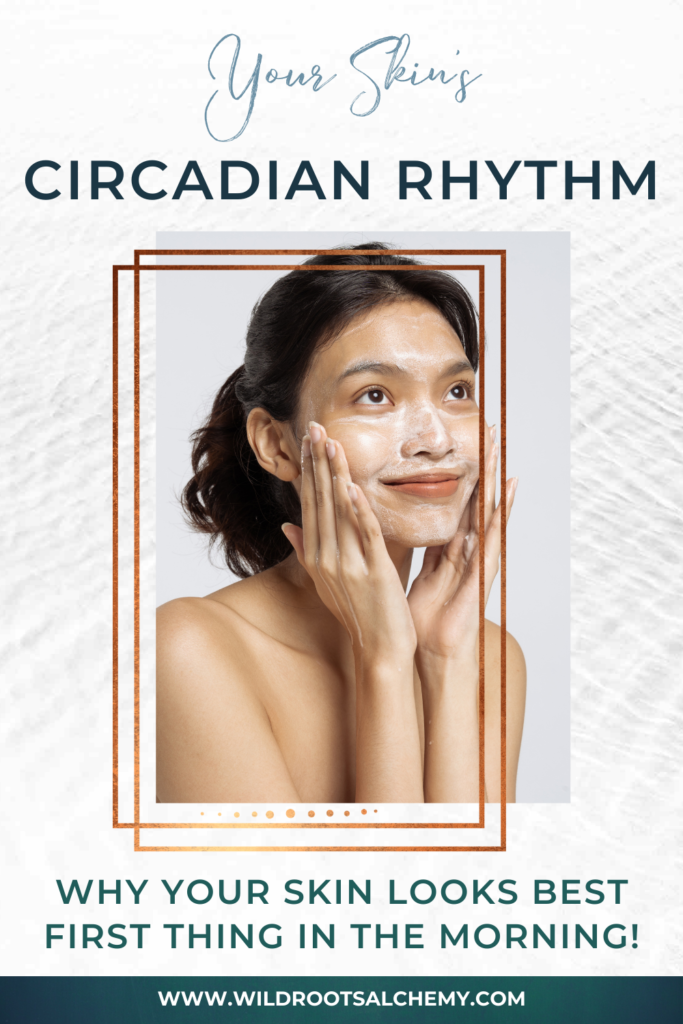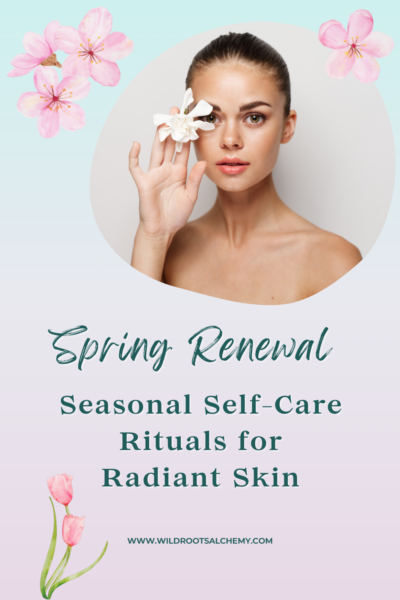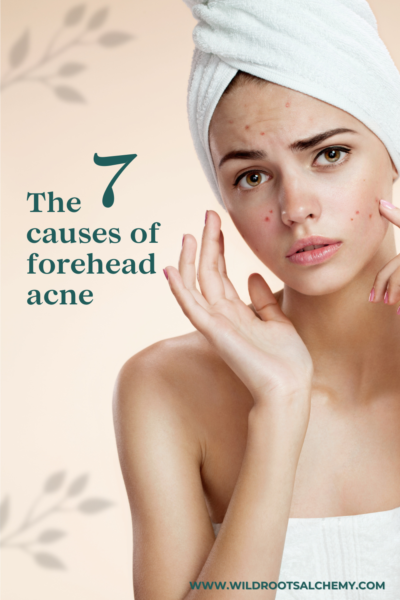
Have you ever noticed that your skin feels and looks its best first thing in the morning?
But by the end of the day, you might notice that your skin feels more inflamed or flushed, or more oily or dry. The texture may be more rough and not as smooth as it felt when you first woke up.
This is because your skin changes according to the time of day! Your skin, just like the rest of your body, follows a 24-hour circadian rhythm.
However, poor sleep and a disrupted circadian rhythm can throw off your skin’s own circadian rhythm and its ability to self-heal, contributing to premature aging and poor skin health. That’s why it’s important to get high-quality sleep and maintain a healthy circadian rhythm (your sleep/wake cycle).
Just by getting good sleep and aligning your skincare with your skin’s natural circadian rhythm, you can easily improve and maintain your skin’s health!
Also, have you also noticed how your skin changes throughout your menstrual cycle? Or even how your skin feels different in the winter as compared to the spring season? This is because your skin changes in alignment with all ofNature’s rhythms!
How your skin changes throughout the day
MORNING
If you’ve had a good night of sleep, you’ll wake up fresh-faced. Your skin should feel smooth, hydrated and plump, and any blemishes should look less inflamed than they did the night before. This is because your body was busy detoxifying and clearing out wastes throughout the night. As you sleep, collagen production and skin cell repair and regeneration occur more quickly and blood flow to your skin increases, all of which benefits the health of your skin. To say it again: Good quality sleep is oh-so-important for your skin health!
As you start off your day, your skin is focused on protection. Your skin’s pH goes down, making it a bit more acidic, and sebum production goes up. Your skin wants to defend itself against the elements like air and sunlight, as well as environmental pollutants.
Sebum production typically peaks in the afternoon when you are most likely to be out and about, exposing your skin to the pollutants, irritants, and the weather. Too much oil production may be due to added stress as you go through your day, as stress triggers sebaceous glands to produce more oil. An extra oily face could also be due to dry, dehydrated skin, as your skin will attempt to maintain hydration by overproducing oil.
To alleviate mid-day oiliness, make sure to manage your stress response, stay hydrated by drinking plenty of water with added trace minerals, and work on repairing your skin barrier by eating plenty of healthy fats so it doesn’t get too dry or too oily (I’ll do a future post all about skin barrier repair!).
Morning Skincare
In the morning, aid your skin’s protective mechanisms by providing it with antioxidant-rich phytonutrients, like vitamin C, vitamin E, niacinamide, polyphenols (like resveratrol), alpha lipoid acid, CoQ10, and ferulic acid.
You also want to apply a humectant to keep your skin hydrated throughout the day. Your skin naturally loses water throughout the day via evaporation in a process called transepidermal water loss (TEWL). Humectants pull water from the air to your skin, keeping it moisturized and preventing excessive transepidermal water loss. However, if you live in a very dry climate, humectants may pull moisture from your skin, which isn’t desirable (although I live in a dry climate and haven’t personally found this to be the case for me).
Humectants include ingredients like aloe vera gel and hyaluronic acid. I like this Antioxidant Serum by Juice Beauty, as it contains a number of healing botanicals, antioxidants, and aloe as a humectant.
If you apply a humectant, make sure to apply a moisturizer afterwards to lock in the hydration! I like this Nutrient Moisturizer from Juice Beauty because it’s full of linoleic-acid rich plant oils and skin-calming herbs.
EVENING
As the day goes on, cortisol levels start to decline. Since cortisol is a natural anti-inflammatory, you may notice that inflammatory skin conditions (like acne!) start to get worse as you head into the evening, when cortisol levels are at their lowest.
Your skin barrier becomes more permeable as the day goes on, which results in increased water loss (TEWL) via your skin and reduced skin hydration. This is why your skin often feels less plump and hydrated, and more rough or dry, near the end of the day.
As nighttime looms, your skin starts to focus on repair and rejuvenation in preparation for its essential repair period while you sleep. Blood flow to your skin increases, which brings more oxygen and key nutrients for skin repair to where it’s needed. As you sleep, your skin experiences an increase in DNA repair and cell proliferation which promotes skin healing and regeneration.
Evening Skincare
For your evening skincare routine, apply products with active ingredients that support skin barrier repair. Your skin’s barrier is more permeable at night, which allows skin-repairing active ingredients go deeper into the skin layers.
Incorporate active ingredients like:
- Alpha and beta hydroxy acids (AHAs/BHAs): AHAs like glycolic acid and BHAs like salicylic acid are best used at night, up to 3-4 times per week for AHAs and up to once daily for BHAs, depending on your skincare needs. Apply these after cleansing and before applying your moisturizer.
- Ceramides: These are fatty acids that made up the lipid barrier of your skin, keeping your skin barrier intact and hydrated.
For moisturizers, you’ll want to apply a deeply-hydrating night cream and/or a linoleic-acid rich oil to trap in active ingredients and hydration for optimal skin repair. Juice Beauty’s Stem Cellular Anti-Wrinkle Overnight Cream is one great option for nighttime moisturizing that contains ceramides.
If you want to apply a linoleic-acid rich oil (linoleic acid is an essential component of your skin’s lipid barrier), apply a few drops of rosehip seed oil or borage seed oil after, or instead of, applying your moisturizer.
Disclaimer: Some of the links to products in this article are affiliate links. I make a small commission off of sales of these products at no additional cost to you. Thank you for helping to support my small business!





